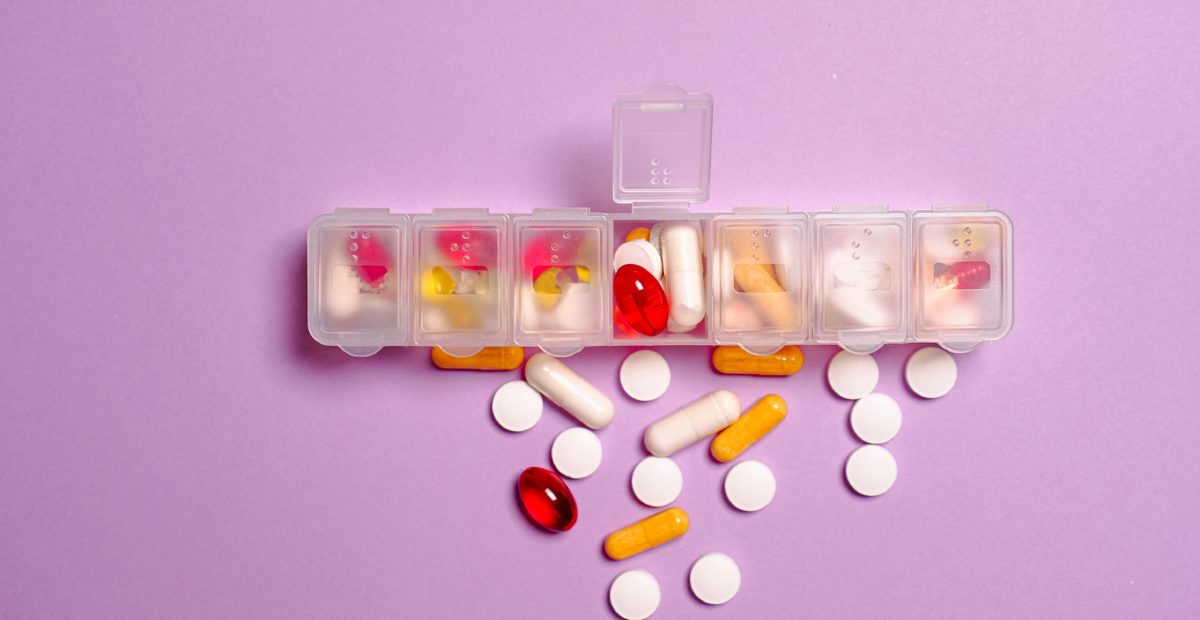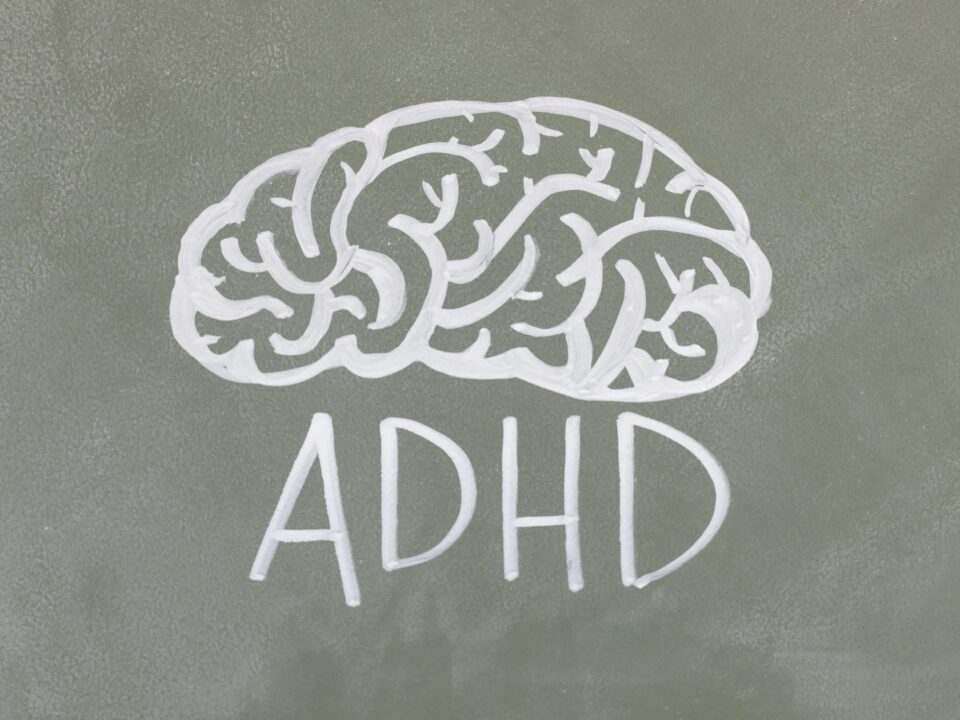Types of ADHD Medicication & Side Effects

Featured image by Anna Shvets, Pexels.com
Updated on 17th March 2022
Note: This blog was written by our volunteer April; they are not a doctor. Please consult with a GP to find out more.
Introduction
While ADHD is an incurable neurological condition, its symptoms can still be treated with different kinds of medication depending on the traits.
In the Storybooth animation that tells the story of Mack and her ADHD, she explains that she takes three different pills a day. “An antidepressant, a focus medicine and a medicine to help [her] sleep” as a basic explanations of ADHD medication.
Can ADHD be managed with medication?
Yes, medication can help to relieve the symptoms of ADHD, making the condition less of an everyday issue. However, a combination of medicine and therapy is often the best solution.
It should be noted that medication cannot cure ADHD since it’s an incurable condition. To identify the best options available, you should discuss treatment options with a specialist like a paediatrician or a psychiatrist, with your GP keeping an eye on the condition.
How does ADHD medication work?
Essentially, ADHD medicines work by helping people to be calmer and less impulsive. Then they can concentrate better, with an improved ability to acquire new skills or knowledge, which would otherwise be troublesome for those with ADHD.
Stimulant medicines boost levels of two important chemicals in the brain: dopamine and norepinephrine. With higher levels of these chemicals, you’ll have a better attention span and a greater ability to concentrate.
Non-stimulant medicines also help to improve concentration and manage compulsive behaviours, but they do so without altering dopamine and norepinephrine levels.
When you first begin taking ADHD medication, you’ll usually start off with a small dose, which could gradually be increased according to your needs. Your GP will closely monitor how the medication is working.
Some medicines should be taken daily, while others can be taken less regularly, such as on school days, for example.
How long does ADHD medication take to work?
It can sometimes take a few weeks to pinpoint the right dosage for you. However, when your GP has identified the correct dosage, medicines such as methylphenidate, dexamphetamine or dextroamphetamine should start to work within 30-60 minutes of taking them. Some medications are administered in slow-release tablets, deliberately delaying the full effect of the drug.
Once they’ve taken effect, some medicines last for around four hours, while others can last as long as 14 hours.
What are the side effects of ADHD medication?
Each medicine will come with its own particular side effects (most of which are mild), but here are some common side effects of ADHD medication:
- Headaches
- Stomach aches
- A small increase in blood pressure and heart rate
- Loss of appetite
- Insomnia
- Nausea or vomiting
- Drowsiness
- Dizziness
- Diarrhoea
- Tiredness or fatigue
- Abdominal pain
- Dry mouth
- Feeling aggressive, anxious, irritable or depressed
If you begin to experience any side effects at all from your medication, it’s vital to speak to your GP as soon as possible. They’ll be able to determine whether you should switch to a different type of ADHD medication, take a reduced dose or stop taking medication entirely.
It’s especially important to consult your GP if you start to feel suicidal or experience liver pain.
Below are the main types of pill to help with ADHD symptoms and the brand names they prescribe under.
Stimulant medications for ADHD

Image by Vladislav Vasnetsov, Pexels.com
Methylphenidate
This is the most commonly used type of medication for people with ADHD. It is a stimulant that increases brain activity, especially in areas that “play a part in controlling attention and behaviour.”
This medication can be prescribed under brand names such as Ritalin and Methylin. It can be effective for 3 – 4 hours per short-acting dosage if it is taken 2 to 3 times per day or its effects can last all day If it is taken on a single long-acting dosage. It is usually taken in tablet form.
The NHS article about ADHD treatment states that this type of medication “may be offered to adults, teenagers and children over the age of 5 with ADHD”. In contrast, the WebMD article about ADHD states that some stimulants can be given to children from the age of 3, while others can be given to children from the age of 6.
Dexamphetamine or Dextroamphetamine
These work in a similar way to Methylphenidate and can also be given to children with ADHD aged five and over according to the NHS.
Brand names of Dexamphetamine and Dextroamphetamine include Dexedrine, Zenzedi and Adderall.
These types of medication can be taken “as a tablet once or twice a day.” However, there is also an oral liquid solution available.
Lisdexamfetamine
This works similarly to Methylphenidate, Dexamphetamine and Dextroamphetamine. It can be given to children with ADHD from the age of 5, but only “if at least six weeks of treatment with Methylphenidate has not helped.” Adults who have ADHD may also be offered Lisdexamfetamine instead of Methylphenidate.
Brand names for Lisdexamfetamine are Vyvanse in the form of a regular capsule that is best swallowed with fluids or Vyvanse Chewable, which is a chewable tablet.
Non-stimulant medications for ADHD

Image by Andrea Piacquadio, Pexels.com
Atomoxetine
This works differently from the stimulant above medications. It is a selective, noradrenaline reuptake inhibitor (SNRI). This means that it increases the amount of noradrenaline in the brain. Noradrenaline “passes messages between brain cells.” Increasing this chemical can help maintain concentration levels and control impulsive behaviour.
Children aged five and over, teenagers and adults may take Atomoxetine if it is not possible to take stimulants. Still, it is licenced for use by adults if they have confirmed symptoms of ADHD.
Atomoxetine is prescribed under the brand name of Strattera. It can be taken once or twice a day, and its effects can last for up to 24 hours.
Guanfacine
This type of non-stimulant works on the brain to improve attention, and it also lowers blood pressure.
It can only be taken by children over five and teenagers if Methylphenidate or Lisdexamfetamine cannot be used, but not adults.
Brand names for Guanfacine include Intuniv and Tenex. While each can be taken once a day in the morning or the evening, the former can last up to 24 hours while the latter can last from 6 – 8 hours.
Antidepressant medication for ADHD

Image by Vanessa Loring, Pexels.com
Antidepressants for ADHD include Bupropion (brand names Wellbutrin, Wellbutrin SR and Wellbutrin XL), Desipramine (brand name Norpramin), Imipramine (brand name Tofranil and Nortriptyline (brand names Aventyl and Pamelor). Their effects can last from 4 – 24 hours.
It is recommended that anyone who has ADHD and is thinking of taking medication to manage their symptoms discusses the risks and benefits of each medication type before taking them.
Are there any alternatives to ADHD medication?

Image by Tima Miroshnichenko, Pexels.com
Medication might not work for all people who have ADHD. The actor Channing Tatum, who has ADHD, “is not a fan of prescription medicines” to treat it because “the more he took, the less it worked.”
Therapy may be more beneficial for people if medication does not work for them. Different types of therapy include psychoeducation, ordinary behaviour therapy, cognitive behaviour therapy (CBT), parent training and education programmes for children with ADHD and social skills training.
Ritalin vs dexamphetamine, which is right for you?
Both Ritalin and dexamphetamine are stimulants used to help control levels of two chemicals in your brain, dopamine and norepinephrine, that affect how well you concentrate. However, despite having the same intended effect, the medication works differently and can have different side effects.
The key difference is that Ritalin is a short-acting drug that reaches peak levels in the body in a shorter amount of time compared to dexamphetamine. Ritalin tends to reach peak levels within an hour whilst dexamphetamine can take up to three hours. As a result, Ritalin tends to start working quicker than dexamphetamine. This means that dexamphetamine stays longer in the body than Ritalin, with the effects lasting longer.
Both Ritalin and dexamphetamine are effective ways of treating ADHD. However, one option may work better depending on how your body responds to the drug. If you’re looking for immediate effects for a short period, then Ritalin might be better suited. If you’re looking for extended effects that take longer to take effect, then dexamphetamine could be the right choice.
Both drugs have potential side effects:
- Insomnia
- Anxiety
- Increased sweating
- Increased heart rate
- Dry mouth
- Nausea
- Headache
Strattera vs Vyvanse, what’s the difference?
Strattera and Vyvanse use different methods to treat the symptoms of ADHD. Strattera is a non-stimulant drug while Vyvanse is a stimulant. Technically Strattera is an antidepressant, however, it’s only used to treat ADHD. Strattera works by changing the way a person’s brain uses norepinephrine, which is a brain chemical that impacts a person’s ability to pay attention. Therefore, Strattera alters this system to improve attention span. Strattera is a good choice for those wishing to avoid stimulants or have anxiety.
Vyvanse is a stimulant used to treat ADHD, it also impacts the way a person’s brain uses certain chemicals by blocking the reuptake of norepinephrine and dopamine. This assists both with attention span and motivation.
Vyvanse vs Ritalin, what’s the difference?
Both Vyvanse and Ritalin are stimulants used to treat ADHD. They focus on treating poor focus, reduced impulse control, and hyperactivity. However, Vyvanse is also prescribed to treat binge eating disorder whilst Ritalin can be prescribed to treat narcolepsy.
As mentioned previously, Ritalin gets to work quickly, with more immediate effects that won’t last as long. Vyvanse enters your body in an inactive form and so your body must process this drug to make it active. This means that the drug takes longer to take effect but then also lasts longer and should be taken less often.
Both drugs can trigger similar side effects:
- Loss of appetite
- Digestive issues
- Dizziness
- Dry mouth
- Anxiety or irritability
- Trouble sleeping
- Weight loss
However, Ritalin has been shown to cause more headaches and higher blood pressure. Vyvanse is more likely to impact appetite.
What is PRN ADHD Medication?
ADHD medication is often taken on a pro re nata (PRN) basis. This means that taking medication isn’t scheduled, instead, it’s taken whenever needed. This means that patients can take the medication whenever they feel as though they need to – for example, when at work. This means that, depending on the type of ADHD medication you’re using, you may take the prescription more or less often.
Science of ADHD drugs webinar
Nat Hawley, our Head of Community, has hosted a webinar that discusses the scientific aspect of ADHD drugs and medication. Nat is also not a doctor, so it is best to seek advice from a medical professional for more information and advice from this webinar.




